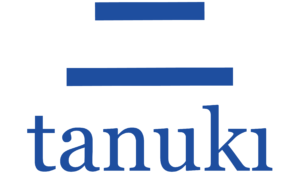
Every once in a while you find yourself in the right place, at the right time, and you find something special. It is my honor to be the first to review Tanuki. With over 30 years of experience in every aspect of the denim making process. They were there when Japan first started making denim. They have been making denim ever since. They have been slowly perfecting the art of Kibata (Japan raw denim). The mills they use are a secret. Their secret fabrics are upgraded and refined versions of original, highly sought after japanese denim that has not been available for three decades. All they really want you to know is…
“Our names don’t matter. What matters is that we have brought back traditions… What matters is that we brought back fabrics no one has seen in over three decades. What matters is that we are taking the past and looking forward. What matters is that we are here to maintain an art(form)…” ~ Tanuki
I was lucky enough to talk with a member of this Tanuki and attempted peel back some of the mystery. I was let in on some of their secrets and this is what I can share with you.
The Group
Tanuki does not have any main headquarters or offices. The people involved are spread throughout Japan, in different areas. It is more of a project than a brand in this way as all of the members are involved with other companies. The reason they do not disclose their denim mill is because they are familiar with the pressures that mills get from the outside world to sell them their fabrics. They want to avoid the headache of constantly having to refuse other brands their special denim.
The Concept
The concept behind Tanuki is to bring back old Japanese fabrics that were most appreciated for their texture but are currently not available anywhere. Fabrics that feel different then denim from any other brands. The details are original and distinct but are clean and minimalistic. They design their jeans very carefully and deliberately simplistic. they insist on producing jeans with premium construction on a level that does not exist in Japanese denim industry today. They have consulted with european designers on crafting modern cuts not found in the traditional Japanese denim, and infused their modern expertise into their tradition fabrics and construction.
The Brand
They are not branding Tanuki with the image of American heritage, like old Levis. The two lines in their logo for example, represent the number two (in Japanese, “ni”), because Tanuki is created from two elements: the past/tradition and the future/change. The line at bottom is the wider base on which Tanuki is born: Heritage, Tradition and Craft. It is white because it is peaceful and established. The top line is the future and change. Smaller but equally important to balance the big line. The color is red to represent brightness and strength and meant to stand out, as Tanuki stands out from tradition. These are also the colors of the Japanese flag, which they honor deeply.
Upcoming Collaborations
- Tanuki x Mamnick – A steel bracelet made in sheffield, will be finished in early fall.
- Tanuki x Oni – Now fully designed but production timing depends on Oishi-san and factory availability on his side. I do not have permission to tell you exactly what it is but I am VERY exited for this collaboration.
- Tanuki x Oak Street Bootmakers – Still in process of design with Oak Street. Tanuki is hoping to have it ready for the fall.
Tanuki Goes On The Record
“Working with Kibata (Japan raw denim) is very difficult. People treat like normal fabric but Kibata does not act like normal fabrics. Other Japanese brands have taken cuts from famous European brands, broken it apart and tried to copy the cuts using Kibata. This does not work because shrinkage does not work evenly with different sizes in Kibata. So denim results with strange fit issues like pockets do not work or rise that is too short, or lack of flexibility in areas where a person moves. Something that might work for a size 31, but it failed for other sizes. The main denim maker of Tanuki and other people in team are expert at making Kibata fabrics and also constructing clothes with it. What they make with Kibata follows a formula developed through time to avoid the problems that other makers have. We admit that we do not have expertise in European/western cuts and styles, so we are, for first time, reaching out to partner with European experts for cuts, fits and design. This combination makes the perfect denim clothes.” ~ Tanuki
Here, I am excited to be reviewing:
~ The Denim Hound 4-12-16
